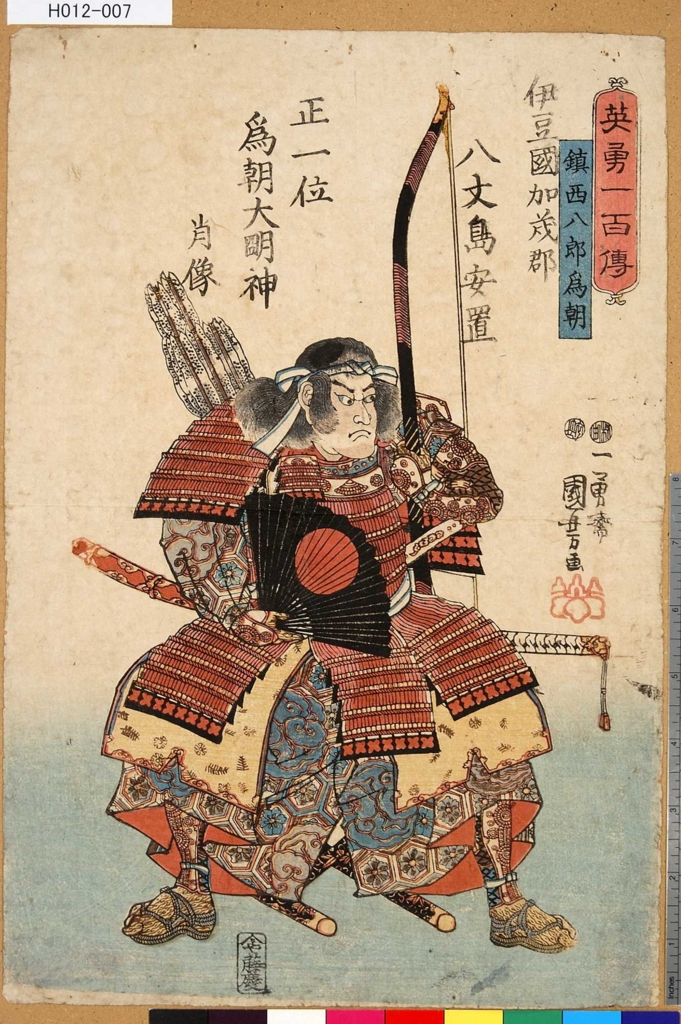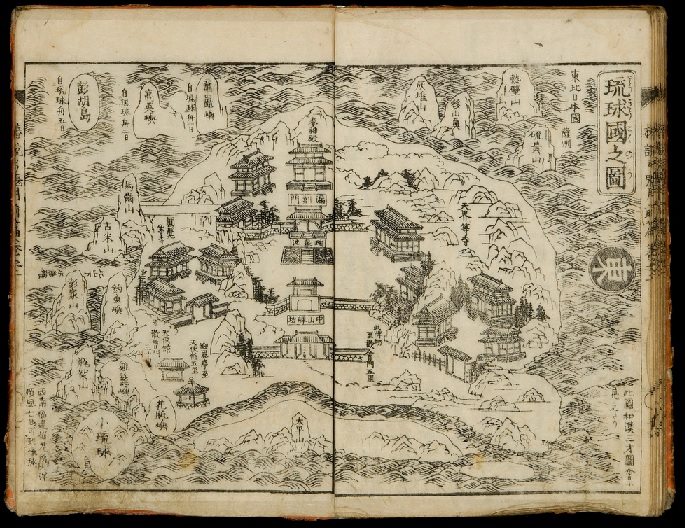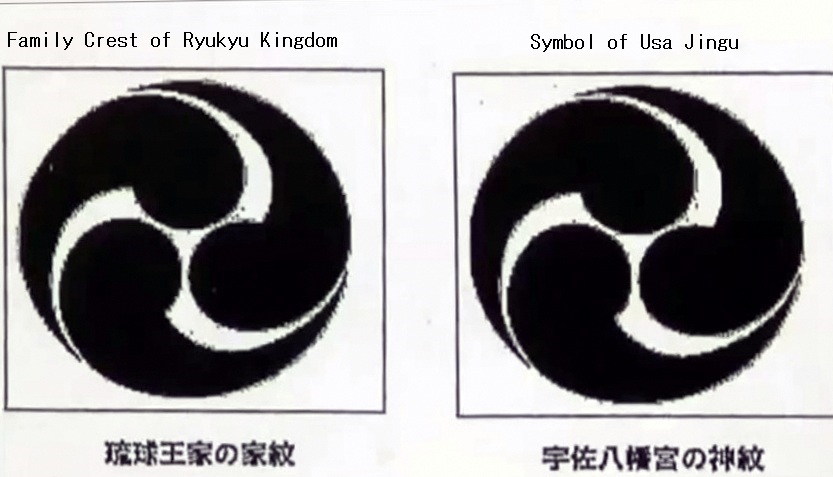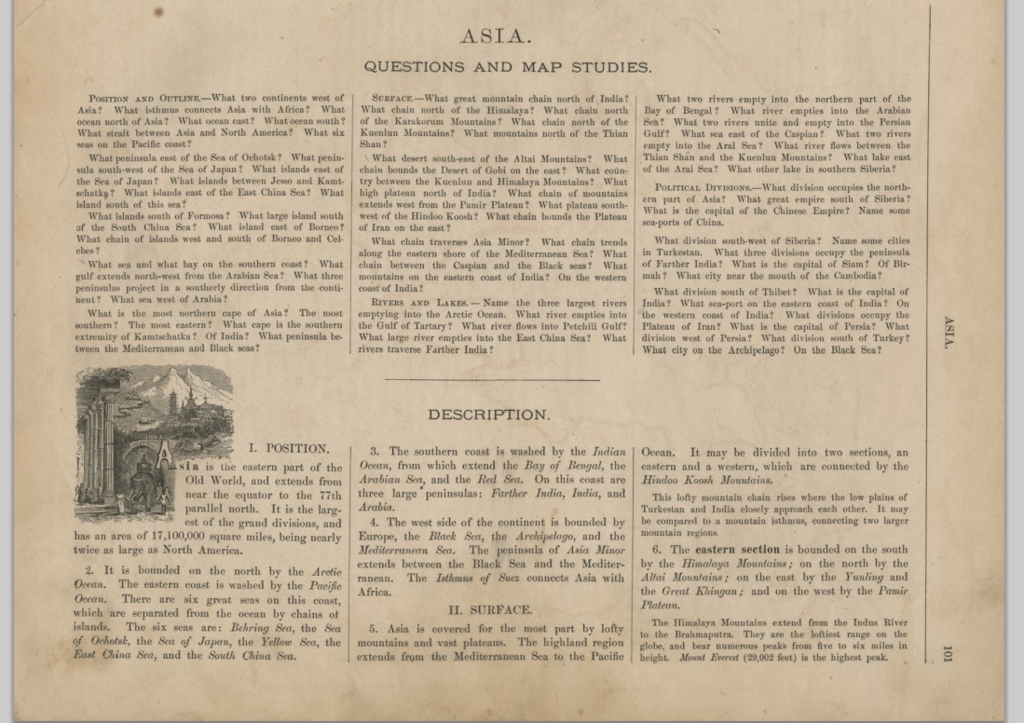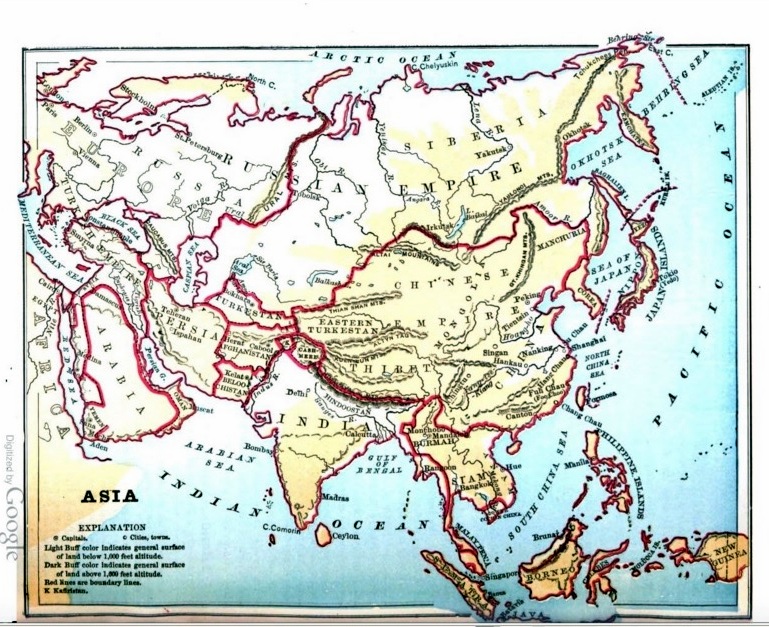“RESPONSE TO THE UPDATED VERSION OF THE OPEN LETTER IN SUPPORT OF HISTORIANS IN JAPAN”
This is the copy of above mentioned article.
Please refer: http://www.sdh-fact.com/CL/RESPONSE.pdf
+++++++++++++++++++++++++++++++++++++++++++++++
October 1, 2015
RESPONSE TO THE UPDATED VERSION OF THE OPEN LETTER IN
SUPPORT OF HISTORIANS IN JAPAN
An open letter signed by 187 scholars (whose ranks later swelled to 464) appeared on a
website used by The Asia-Pacific Journal: Japan Focus on May 5, 2015; an updated
version was posted on May 7 (http://www.japanfocus.org/events/view/252).
Our response, a rebuttal, addresses the updated version, which condemns the Abe
administration and makes demands on Prime Minister Abe. Perhaps the letter’s authors
(and signers) have forgotten that Japan is a democratic nation with a parliamentary
cabinet system. Condemnation of and demands on the Abe administration are
tantamount to condemnation of and demands on each and every Japanese citizen.
The Alliance for Truth about Comfort Women is a private organization; all of our
members are volunteers. We have no connection with the Japanese government. We do, however, possess the right to preserve the honor of the Japanese people in the face of unfounded accusations and unreasonable demands. Beyond that right is a moral, sacred obligation to our ancestors and descendants to refute those accusations and oppose those demands.
We ask all those who signed the Open Letter to read our response dispassionately and
objectively, as behooves genuine scholars, and hope it will inspire you to reappraise the
content of the Open Letter.
1. Rebuttal outline
We have read the Open Letter with great care. We might simply dismiss it if it were a
statement issued by a political organization. But it is purported to have been written
by scholars. Therefore, we cannot simply dismiss it. We must draw the world’s
attention to its dearth of objective logical reasoning, a requisite of scholarly opinion.
For that reason (and for other reasons to be outlined in detail below), we have no
choice but to conclude that the Open Letter is racist hate speech, pure and simple.
The following four aspects of the Open Letter demonstrate its lack of objective logical
reasoning:
(1) You have obviously made no investigation whatsoever based on the verified
evidence into assertions that you present as historical fact. Therefore, those
assertions cannot be considered conclusions resulting from historical research.
(2) You have not examined any of the resources that refute or discredit the claims in
the Open Letter.
(3) You condemn Japan in a vacuum, making no comparisons with actions taken by
other nations under similar circumstances.
(4) You seem to have given no thought to jurisprudence, especially the way in which
the rules of law have changed over time. You use current value standards to form
judgments against businesses or practices that were once legal.
Furthermore, in the updated version of the Open Letter you refer to the Nanjing
“massacre” and the Yasukuni Shrine controversy. Here again, the opinions you
express are not products of objective logical reasoning. For that reason, our rebuttal
will first focus on the problems we detected in the portion of the Open Letter dealing
with the comfort-woman controversy. Then we will turn to Nanjing and the Yasukuni
Shrine.
■ Verification of historical fact
The Open Letter contains the following passage:
“The scholars ask Prime Minister Abe to acknowledge openly that this system was
‘distinguished by its large scale and systematic management under the military, and
by its exploitation of young, poor, and vulnerable women in areas colonized or
occupied by Japan.’”
Exactly what do you mean by “large scale?” Have you done quantitative analyses of
similar cases in other nations?
Does your criticism of “systematic management by the military” mean that you
advocate allowing military personnel to satisfy their sexual needs without
intervention from military authorities? Have you looked into the manner in which
Soviet troops satisfied their sexual needs in Berlin and Manchuria? Are you not
aware that US and Korean military authorities administered to their soldiers’ sexual
needs in Vietnam?
By establishing and operating comfort stations, Japanese military authorities
ensured the safety of the women working there, protected them from sexually
transmitted diseases, and prevented abuse. The results were the best that could be
hoped for in such a situation. Would you have wanted the authorities to allow soldiers
to run rampant?
You mention the “exploitation of young, poor, and vulnerable women.” Please explain
what you mean by exploitation.
You also refer to the apologies offered via the Kono Statement and statements made
by other Japanese government officials. Those statements are political in nature, and
do not necessarily reflect the truth. They necessarily have political overtones
influenced by diplomatic considerations, and are not intended to be (indeed, must not
be) used by scholars.
Japanese military authorities had no direct involvement in the recruitment process.
Private brokers did the recruiting; in some cases women were recruited against their
will (poor families sometimes sold their daughters to brokers). Many women became
(civilian) prostitutes for the same reason. We know from contemporaneous newspaper
advertisements placed by brokers that women who worked at Japanese comfort
stations were paid approximately 300 yen per month (30 times the salary paid to a
private first class). The high salary prompted many women to respond to the
advertisements, and many parents to do so on their daughters’ behalf. The military
authorities did not recruit women, and they certainly did not force anyone to serve as a
comfort woman. There was no need for them to do either. If you possess verified
evidence to the contrary, please produce it.
Some former comfort women have testified that they were rounded up by the police,
or by military police. At the time there were about 400 military policemen stationed
in Korea. Most police officers were Korean. There was no need for military policemen
to serve as pimps, and regulations that governed them prohibited them from doing so.
Nor did they have time for such activities. Accordingly, such testimony must be
considered unreliable.
Is it true that the comfort women “lived in misery”? And what are we to make of
“excluding those from Japan”? Suppose all the comfort women had been Japanese.
Would it have been permissible to coerce them or allow them to live in misery?
In any case, we urge you to present proof that corroborates your assumptions about
the comfort women. Accusations unsupported by evidence constitute libel.
■ Evidence that refutes your claims
Next we shall provide evidence that refutes your claims beyond any doubt.
1. We presume that you are aware of Japanese Prisoner of War Interrogation Report
No. 49 issued by the US Office of War Information in 1944. Since this is an official
report prepared during World War II, the Americans who wrote it would not have
made any efforts to show the Japanese in a good light. That is precisely why it is a
reliable resource. The report states that “a ‘comfort girl’ is nothing more than a
prostitute or ‘professional camp follower’ attached to the Japanese Army for the
benefit of the soldiers.” It also tells us that the women lived well, and “amused
themselves by participating in sports events with both officers and men, and
attended picnics, entertainments, and social dinners.
2. Next we have the testimony of a former comfort woman named Mun Ok-ju.
Morikawa Machiko, a former left-wing activist, compiled Ms. Mun’s recorded
testimony into a book entitled I Was a Comfort Woman with the Shield Division
on the Burma Front. Ms. Morikawa is not the sort of person to glamorize Ms.
Mun’s recollections. In the book Mun Ok-ju says that she sent large amounts of
money to her family in Korea, and bought diamonds and expensive clothing. She
also mentions that she had enough money in her bank account to purchase
several houses in Japan. Ms. Mun remembers proudly parading around
Rangoon wearing the clothing she had purchased, and speaks of her lover, a
Japanese soldier. Since she reveals that her colleagues also purchased expensive
jewelry, Ms. Mun was obviously not an exception to the rule.
How can you call women who earned so much money “sex slaves”? Perhaps some
of their testimonies and recollections are inaccurate, but it is impossible to believe
that they were enslaved.
3. Now we will discuss a report issued by the Asian Women’s Fund under the title
Military Prostitutes: Government Research Resource. It contains many accounts
demonstrating that the Japanese military police oversaw the recruiting process,
meaning that they took pains to prevent brokers from resorting to illegal or
unscrupulous tactics. It also contains statistics about the comfort women, such as place of origin.
4. Wouldn’t you expect Koreans to have been furious if the Japanese had resorted to
coercive recruitment, as you claim they did? Remember that the overwhelming
majority of police officers in Korea were Koreans. Would they have stood idly by
while Korean women (possibly their sisters or girlfriends) were abducted through
illegal, exploitative means? There is no record of riots triggered by recruiting
methods of that sort — not even one. Nor were Japanese troops ever mobilized to
subdue such a riot.
5. A great many Korean women were recruited (forcibly, according to your Open
Letter) as comfort women in 1944 and 1945. Yoshida Seiji began making speeches
about abductions of comfort women in 1982, and in the same year Asahi Shimbun
started carrying articles about Yoshida’s testimony. But at that point there
wasn’t much of a reaction in Korea. In 1991 an article written by Asahi Shimbun
reporter Uemura Takashi was published in the newspaper’s Osaka edition. It
contained testimony by former comfort woman Kim Hak-sun. Korean media
representatives were given advance copies of the article, and the repercussions
were swift and acute. But until then, during a 45-year period, neither the Korean
government nor Korean NGOs broached the subject of comfort women. Has it
never occurred to you that political forces might have been involved in the genesis
of this controversy?
As a matter of fact, it was anti-Japanese Japanese activists who set the stage.
They traveled around Korea, issuing provocative statements about coercive
recruitment and sex slavery, manufacturing what developed into an international
problem out of whole cloth.
6. Conclusions reached by the IWG (Interagency Working Group)
Between 1999 and 2007, an eight-year period that spanned the Clinton and
George W. Bush administrations, the US government launched a massive
reinvestigation into war crimes in connection with comfort women servicing
Japanese military personnel and the systematic enslavement of women for the
purpose of sexual exploitation. Not one American government or military
document was discovered that corroborates either accusation. The conclusion
reached was that the comfort-women system was in keeping with prostitution as
it existed in Japan at the time. What is your opinion of the IWG conclusion?
In the face of an abundance of evidence refuting the claims made in the Open
Letter, do you still stand behind it?
We welcome your opinions on the evidence we have presented.
■ Satisfying the sexual needs of military personnel
Now we will address the global perception of soldiers’ sexual needs and how to satisfy
them, citing several examples. We shall also point out how myopic you are in citing
Japan’s comfort-women problem without suggesting viable alternatives. Or perhaps
you prefer myopia.
1. The Soviet method (used in Germany and Manchuria): We are fairly certain that Soviet military authorities made no attempt to deal with soldiers’ sexual needs.
Their troops did exactly what they pleased. You condemn Japanese military
authorities for their involvement in this matter. Does that mean that you
recommend the Soviet solution to the problem?
2. The American method used in Vietnam (identical to the Korean method used
there): Is it possible that you are unaware of this? If that is the case, ask any
Vietnamese. Surely you know how many Korean-Vietnamese children Korean
troops left behind when they returned home? If you don’t, perhaps you shouldn’t
call yourselves scholars.
3. Do you know one of the first requests US occupying forces made of the Japanese?
They asked for recreation centers, but they were not talking about athletic
facilities. They wanted brothels! Didn’t you know about this? We would expect
scholars worth their salt to be equipped with this information.
As we have indicated above, most of the world’s nations have been faced with the
necessity of providing for soldiers’ sexual needs. The fact that you, knowing that, have
chosen to direct your venom at Japan, and only Japan, leaves us no choice but to
conclude that your invective is racist hate speech. You may insist that you are not
guilty of racism, but we are not convinced.
■ Is prostitution unlawful?
When confronted with the fact that the comfort women were prostitutes, nothing
more, some people may maintain that prostitution is evil. And they will condemn the
Japanese military authorities for their oversight of comfort stations. We would like to
remind them that, in those days, prostitution was legal. Moreover, it remains legal in
most of Europe, the only restriction being that prostitutes must be 21 years of age.
■ Accusations of revisionism
Because we voice opinions about the comfort-women controversy that differ from
yours, most of brand us as revisionists. We would like to demonstrate how ridiculous
that makes you look.
New discoveries about historical events are made with great frequency. They are
followed, in many cases, by new interpretations or explanations, which supplant
previously established theories or opinions. In other words, history is constantly
being revised or modified. For instance, when historical ruins or relics are newly
discovered, the starting or ending points of eras, clearly defined spans of time in
history, often change. Do you insist on calling these changes historical revisionism (in
a pejorative sense, of course)?
■ The Nanjing “massacre”
Recent scholarly research has proven that no massacre took place in Nanjing in the
aftermath of the Japanese victory in December 1937. We now know that the massacre
ploy was the product of Chinese Nationalist and Communist propaganda. The
Nanjing “massacre” lives only in the realm of politics. Are you scholars or politicians?
■ Yasukuni Shrine
Your position in the controversy over Yasukuni Shrine causes us to wonder whether
you have any knowledge of modern criminal law. Since scholars are presumed to
possess a great deal of intellectual curiosity, we would expect you to know about two
fundamental principles of modern law: the prohibition against retroactive law and
nulla poena sine lege. At the International Military Tribunal for the Far East
(commonly known as the Tokyo Trials) Japanese accused of Class-A and Class-C war
crimes were prosecuted and sentenced in violation of those principles. Defense
attorneys asked if the tribunal had jurisdiction, i.e., the right to try persons accused
of war crimes; the presiding judge never supplied an answer. At the basis of the
prosecution of Class-A war crimes was the perception that Japan had waged a “war of
aggression” beginning with the Manchurian Incident in 1931. It was precisely this
perception that defined all Japanese actions as evil. Allow us to explain its
shortcomings.
It is very likely that the Kellogg-Briand Pact contains the basis in international law
for this perception. The agreement seems to prohibit aggressive war. However, it fails
to define “aggression.” Furthermore, when ratifying the agreement, both the US and
the UK reserved the right to exercise military force to protect their interests, even
outside their national boundaries. They also declared that each nation party to the
treaty would decide in which regions it had special interests, and whether there had
been “aggression.” Similarly, US recognition of Japanese interests in China are
reflected in the Ishii-Lansing Agreement.
If those of you who signed the Open Letter are indeed scholars, you must be
conversant with historical fact concerning the principles of modern criminal law and
international law. In the context of the fundamental principles of modern criminal
law and of international law currently in force, there is no such thing as a Class-A
war crime. Accordingly, the Yasukuni Shrine controversy exists only in the minds of
propagandists in certain nations. Do you support those propagandists?
■To those who signed the Open Letter for reasons other than those stated
When the Open Letter was published, the Messrs. OGATA Yoshiaki, SEKINO Michio,
TANIMOTO Sunao, MOTEKI Hiromichi, YAMAMOTO Shigeru and Ms.
YAMAGUCHI Mari issued a statement addressed to those who signed it, drawing
attention to errors and other infelicities. Some of the responses from signers and
comments posted elsewhere made no sense at all.
1. Some signers maintained that they had never agreed to sign the Open Letter.
Nevertheless, their names remained on the list even after the updated version
was posted.
2. Other signers said that they did not agree with the position vis à vis the comfort
women stated in the Open Letter, but signed it because they disapprove of recent
actions taken by the Abe administration.
3. Still others said that they signed in support of Japanese scholars and
commentators who are being unfairly persecuted.
To those who fall into categories 2. and 3, we suggest issuing statements that express your views accurately. Failure to do so is a clear sign of negligence.
As far as critics or commentators who are being unfairly persecuted, the only person
we know of who complains of such abuse is former Asahi Shimbun reporter Uemura
Takashi (now an educator). The reason he is under fire in Japan is not inaccurate
reporting or his beliefs. It is because for a long time after his mistakes came to light,
he remained silent, feigning ignorance. Such behavior goes against the ethics
expected of educators.
We urge those of you who have realized, from the weight of the evidence we have
presented, that you should not have signed the Open Letter, to request that your
names be removed from the “global list of signers.”
Now we would like to address those signers who are Americans. We hold Americans
in the highest esteem, mainly because of their great respect for fairness. The last line
of the American national anthem describes the US as the “home of the brave.” Those
who are truly brave should have the courage to correct errors when they are
discovered.
We ask the American signers to take another unbiased look at the Open Letter. Do
you think the authors’ viewpoint is impartial? If your answer is no, please have the
courage to point out any errors you discover.
If you are truly scholars, we expect you to respond in a rational manner, basing your
arguments on facts. If you have no arguments to present, that means the Open Letter
was fallacious, and that you should not have signed it. It is our intention to broadcast
our conclusion — the fact that the document is indeed fallacious — throughout the
world.
KASE Hideaki
Chairman, Alliance for Truth about Comfort Women
Affiliated Members
・Asian Solidarity Council for Freedom and Democracy
・Gentle Breeze
・Japan Current Affairs Review
・Japanese Society for History Textbook Reform
・Japanese Women for Justice and Peace
・Rom-pa Project
・Society for the Dissemination of Historical Fact
・Society for Passing –down the Real History to the Next Generation
・Society for Reading and Studying FUMI Journal in Chofu
・Society for Protecting and Throwing Light on Honor and Spirit of War Dead
・Texas Daddy Japan Secretariat
・Veteran’s Voices Memorial Project
・Volunteers’ Society for Correcting the Forged Story about Comfort Women
